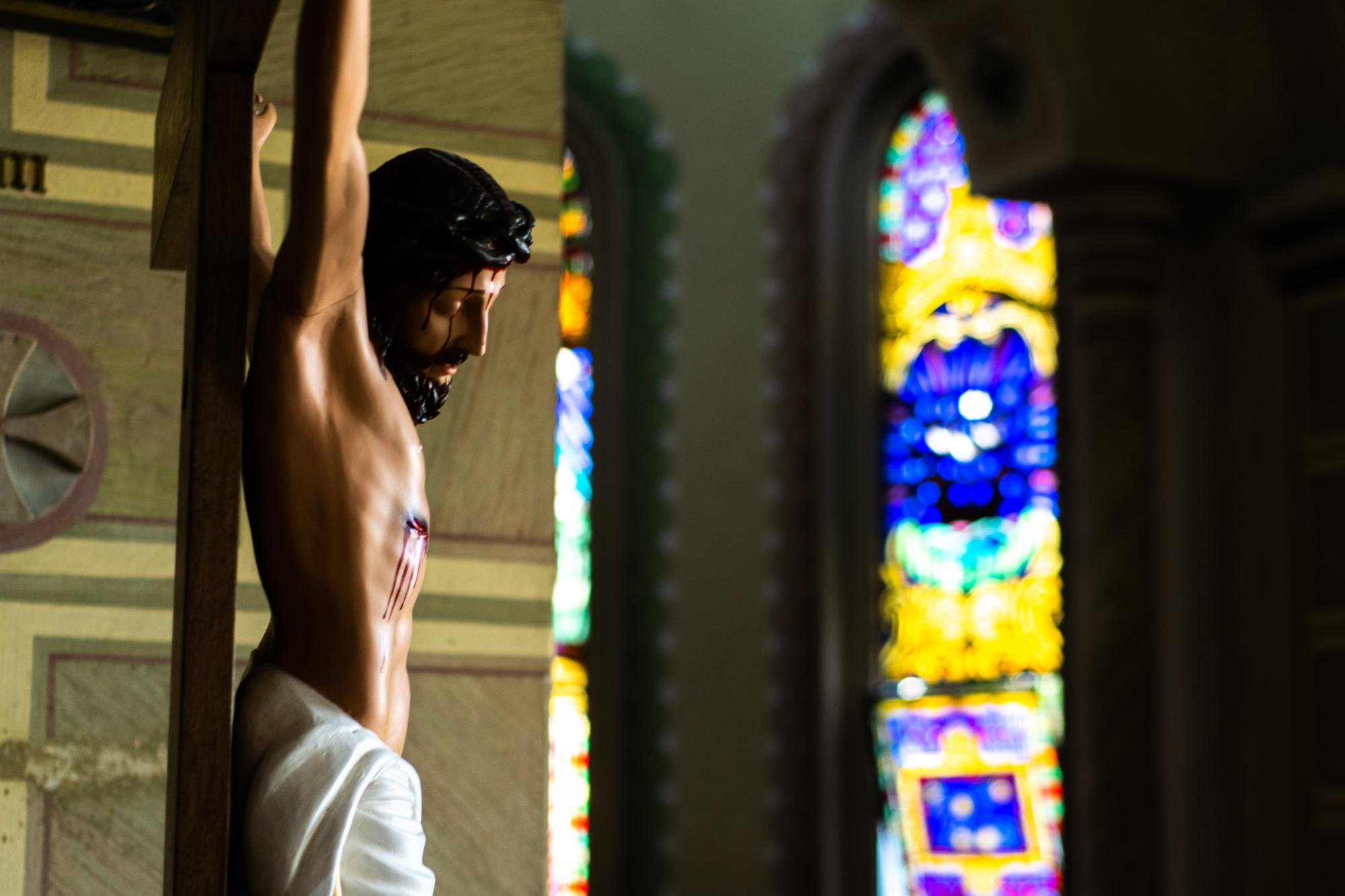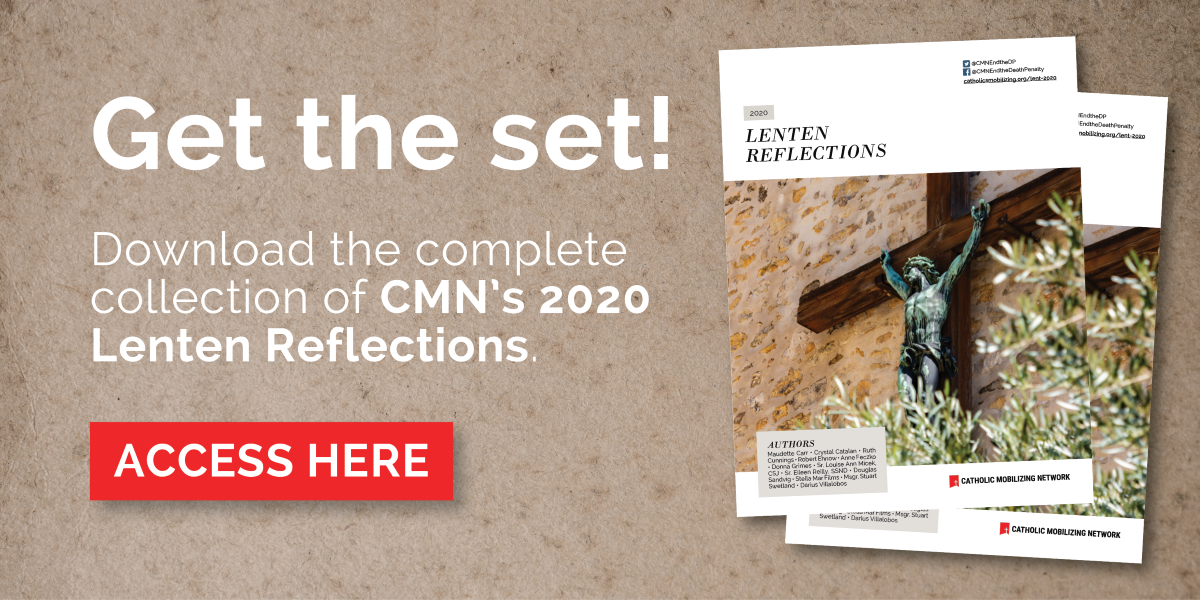
April 10, 2020 | Sr. Eileen Reilly, SSND | Today's Readings
“But he was pierced for our offenses, crushed for our sins; upon him was the chastisement that makes us whole, by his stripes we were healed.” -Isaiah 53:5
Did you ever wonder why we call the day between Holy Thursday and Holy Saturday “Good” Friday? Why not “Holy Friday?” For Catholics, the short answer can be found in the Baltimore Catechism, the standard U.S. Catholic school text from 1885 to the 1960s. Good Friday is “good” because Christ “showed his great love for (us), and purchased for (us) every blessing.”
As today’s first reading tells us, “It was our infirmities that he bore, our suffering that he endured” (Isaiah 53:4). The Jesus of Good Friday is the one who became vulnerable for us, who embraced humanity for us. This act, as we know well, did not take away all human pain and suffering. Rather, it established forever the sure and certain knowledge of a God who is never far from us—in good times and bad, in health and illness, in suffering and death.
In our Scriptures, geography is always important. In John 18:2, we read that Jesus went out to the garden, “because he had often met there with his disciples.” Judas, as one of those disciples, also knew this place. The garden becomes the first place where the vulnerability of Jesus becomes evident as he is confronted by his accusers, and responds, simply,
“I am he.”
Then comes the next key place in the account of the Passion, the high priest’s courtyard. Jesus’ followers have dispersed; he faces his accusers alone and vulnerable. The crowd is agitating for his crucifixion and Pilate, fearing them, acquiesces.
Jesus is then led to the “place of the skull, Golgotha.” We know this place to be a hill outside Jerusalem’s city walls. It could be a place of isolation, but we read that some of his followers, including Mary, his mother, have accompanied him. His vulnerability is accented again as he is crucified beside two common criminals.
In each place along the journey of Good Friday, we see Jesus profoundly vulnerable to those around him—to Judas, who betrayed him, and to his accusers. And yet, Jesus’ vulnerability is not the same as weakness.
Jesus’ example of vulnerability is an act of courage, because it lays bare the totality of the situation. As we work to abolish the death penalty we need that sort of courage. Those who have been sentenced to death are too often summed up by only a piece of their truth—the crimes they have committed. As we journey with them, we come to know their full truth—the totality of their lives both before and after their crimes.
We are invited to embrace our own vulnerability, to courageously accept the totality of our lives, knowing that Good Friday really is “good,” because it is not the end of the journey. Nothing can keep love in the grave.



